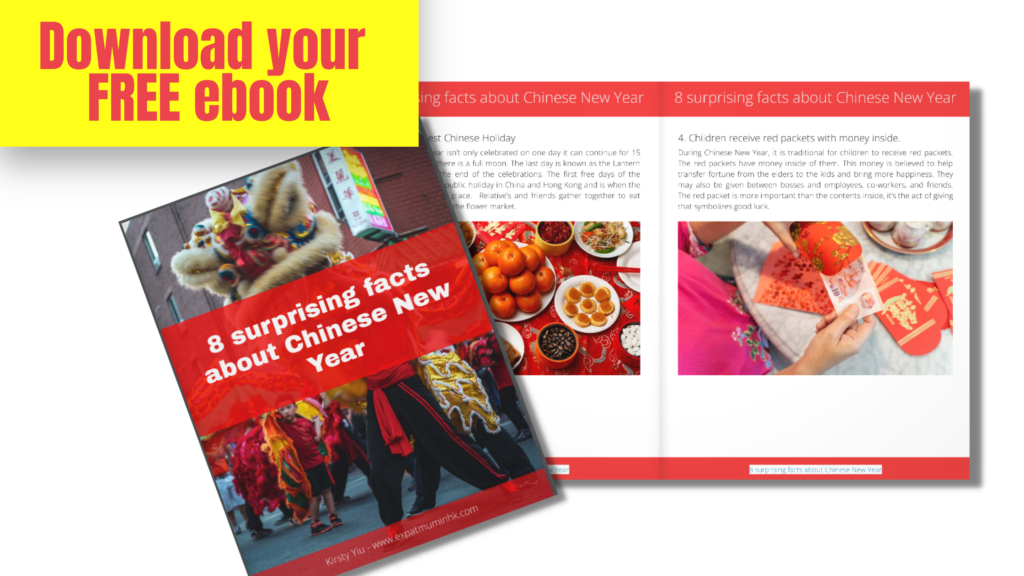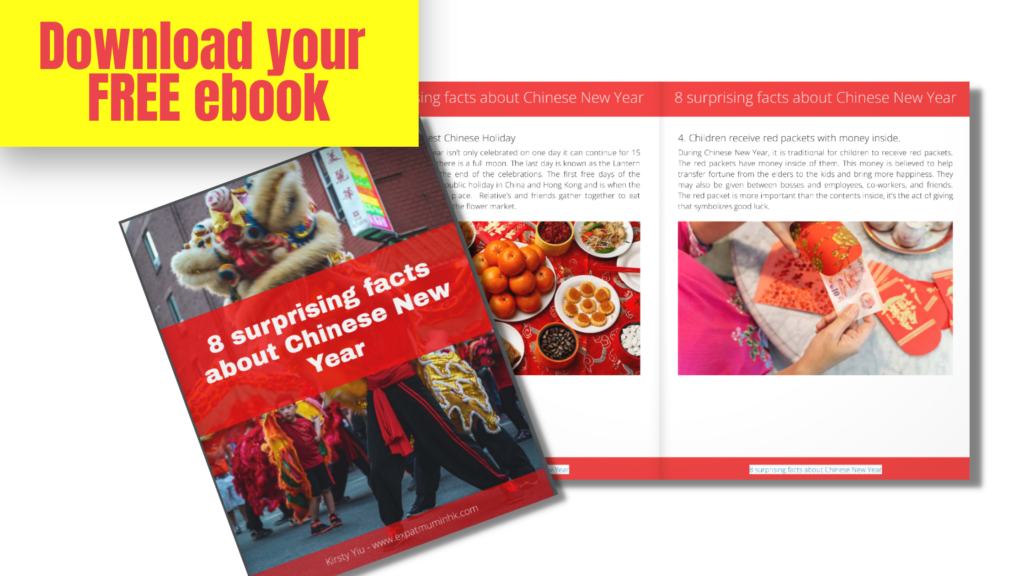8 Surprising Facts about Chinese New Year
Chinese New Year is the biggest Chinese festival celebrated in Hong Kong and China. Prior to Covid-19 people would travel from all over the world to be with their family to celebrate this holiday. Now with travel restrictions currently in place in Hong Kong, there are less people coming from abroad. Despite this it is still the biggest holiday in Hong Kong and China as well as other countries. Here are 8 surprising facts about Chinese New Year.

1. Chinese New Year is also known as Spring Festival
You may have heard Chinese New Year being referred to as the Lunar New Year but did you know that it’s also known as the ‘Spring Festival?. The name Spring Festival signals the start of Spring. It may still feel cold and chilly, but the festival marks the end of the coldest days. The name Lunar Year comes from the Lunar calendar and other countries other than China celebrate it.
2. The Chinese New Year date changes each year
Chinese New Year falls on a different date each year and falls between 21 January and 20 February. The date of Chinese New Year is worked out by the ‘New Moon’. The new moon is the start of the Lunar / Chinese New Year. This is different from the Gregorian calendar, which always starts on 1 January.
3. It's the longest Chinese Holiday
The Chinese New Year isn’t only celebrated on one day it can continue for 15 days and end when there is a full moon. The last day is known as the Lantern Festival. This marks the end of the celebrations. The first free days of the Chinese New Year are public holiday in China and Hong Kong and is when the main celebrations take place. Relative’s and friends gather together to eat tasty food and often visit the flower market.

4. Children receive red packets with money inside.
During Chinese New Year, it is traditional for children to receive red packets. The red packets have money inside of them. This money is believed to help transfer fortune from the elders to the kids and bring more happiness. They may also be given between bosses and employees, co-workers, and friends. The red packet is more important than the contents inside, it’s the act of giving that symbolizes good luck.

5. Before the start of Chinese New Year it is tradition to spring clean
Many people in China and Hong Kong will clean their homes before the Chinese New Year celebrations. This is because they believe it will sweep away any bad luck in time for the New Year.
6. Chinese New Year starts a new animal’s zodiac year.
The western horoscopes include 12 zodiacs, one for each month, whereas there are 12 Chinese zodiacs, one per year. Each of the 12 years is defined by an animal sign: Rat, Ox, Tiger, Rabbit, Dragon, Snake, Horse, Sheep, Monkey, Rooster, Dog, and Pig. 2022 is the Year of the Tiger and 2023 is the Year of the Rabbit.
7. Red is the main color of the Chinese New Year celebrations.
It is traditional to decorate your home, shopping malls, and offices with red paper decorations. This is because red in Chinese culture is the symbol of happiness, wealth, and prosperity. It is also believed that the color red can ward off evil spirits and bring good luck.
8. People set off firecrackers and fireworks.
It is believed that firecrackers are supposed to scare off monsters and bad luck. So people stay up on Chinese New Year’s Eve and set off firecrackers at midnight. In the morning, firecrackers are used again to welcome the new year. Due to safety reasons and concerns about air pollution, many Chinese cities have banned fireworks. However, (pre-covid) there were some organized events such as the annual Chinese New Year Fireworks held at the Victoria Harbour, Hong Kong which were incredible .

We hope you enjoyed these 8 facts about Chinese New Year. If you are celebrating Chinese New Year, we’d love to hear how you celebrate.
DOWNLOAD THE FREE EBOOK

8 SUPRISING FACTS ABOUT CHINESE NEW YEAR – EBOOK
Subscribe to our email list & get the free EBOOK. This will unlock the file and subscribe you to our email list. You can unsubscribe at any time.


